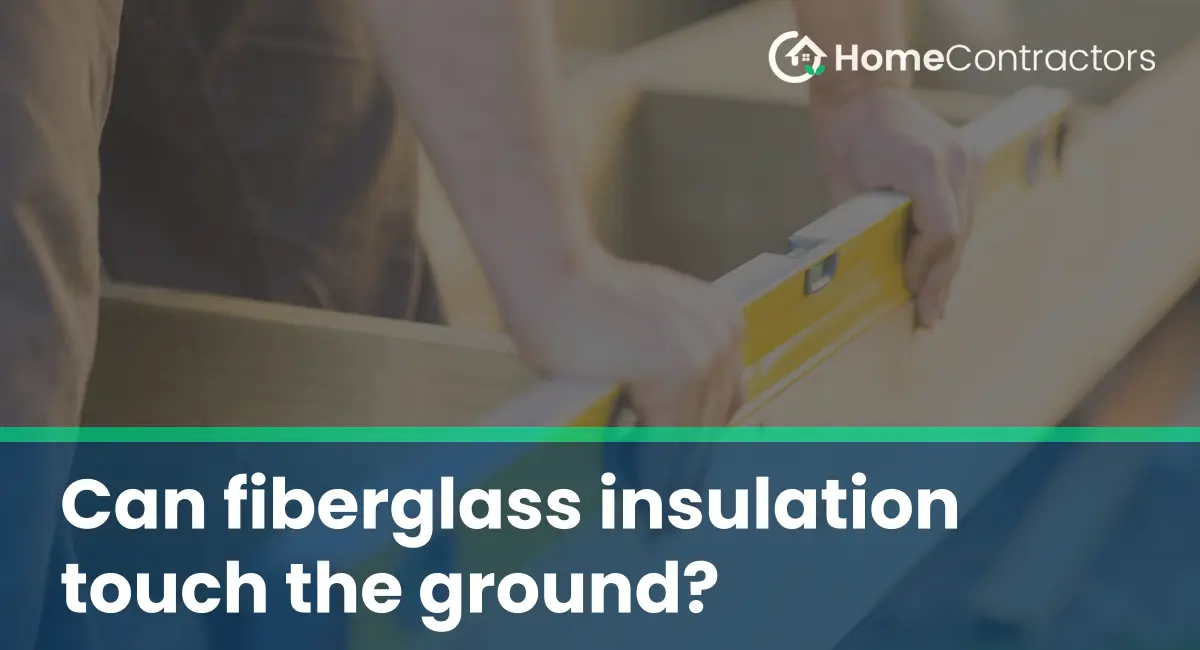Fiberglass insulation is a popular choice for insulating homes and buildings due to its effectiveness in reducing heat loss or gain. However, when it comes to installation, there are certain guidelines that need to be followed to ensure its performance is not compromised. One common question that homeowners often have is whether fiberglass insulation can touch the ground. In this article, we will explore this topic in detail, discussing the potential issues and best practices for installing fiberglass insulation.
Understanding Fiberglass Insulation
To begin, it is essential to have a basic understanding of what fiberglass insulation is. Fiberglass insulation is made up of tiny glass fibers that are tightly packed together. These fibers create small air pockets that help to slow down the transfer of heat or cold. This slow-down effect is what makes fiberglass insulation an efficient way to control the temperature inside a building and increase energy efficiency.
Potential Issues of Ground Contact
While fiberglass insulation is an excellent choice for insulating walls, ceilings, and attics, it is not designed to come into direct contact with the ground. This is primarily due to the potential issues that can arise from ground contact, such as moisture absorption, compression, and pest infestation.
Moisture Absorption: When fiberglass insulation comes into contact with the ground, there is a risk of moisture absorption. Moisture can easily penetrate the insulation, rendering it less effective and increasing the possibility of mold and mildew growth.
Compression: Another problem with allowing fiberglass insulation to touch the ground is the risk of compression. Over time, the weight of the insulation may cause it to compress, reducing its ability to trap air and decreasing its thermal efficiency.
Pest Infestation: Ground contact can also attract pests, such as rodents and insects, to nest or hide within the insulation. This not only poses a health and hygiene issue but can also lead to damage to the insulation and the overall structure of the building.
Best Practices for Installing Fiberglass Insulation
To ensure the optimal performance and longevity of fiberglass insulation, it is crucial to follow best practices during installation. Here are some guidelines to keep in mind when dealing with fiberglass insulation:
- Maintain a Clearance: It is recommended to maintain a clearance of at least six inches between the ground and the bottom edge of the insulation. This space allows for proper ventilation and prevents ground contact.
- Use Vapor Barrier: Installing a vapor barrier between the ground and the insulation can help prevent moisture infiltration. This barrier acts as a shield, reducing the risk of moisture-related issues.
- Insulate Rim Joists: Rim joists, the perimeter of the floor framing, are commonly in contact with the ground. Properly insulating rim joists with fiberglass insulation and sealing any gaps can further enhance the energy efficiency of the building.
- Fix Ground Moisture Issues: Before installing fiberglass insulation, it is crucial to address any ground moisture issues. This may include improving drainage, fixing leaks, or installing a vapor barrier in crawl spaces or basements.
- Seek Professional Guidance: When in doubt, it is always advisable to seek professional guidance. Consulting with a qualified insulation contractor or building professional can help ensure that proper installation techniques are followed, and potential issues are addressed.
Fiberglass insulation should not come into direct contact with the ground. Moisture absorption, compression, and pest infestation are potential issues that can arise from ground contact. To ensure the effectiveness and longevity of fiberglass insulation, it is essential to maintain a clearance from the ground, use a vapor barrier, insulate rim joists, address ground moisture issues, and seek professional guidance when needed. By following these best practices, homeowners can maximize the energy efficiency and comfort of their homes while preserving the performance of fiberglass insulation.
